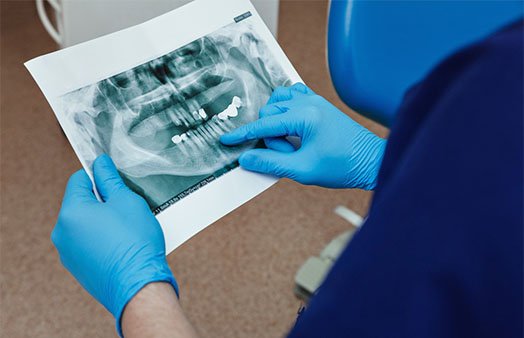Digital Photography & Radiography
WHAT IS DIGITAL RADIOGRAPHY AND HOW DOES IT WORK?
Digital Photography & Radiography Melbourne CBD
High-definition cameras & the latest in dental X-ray technology enables us to diagnose and plan dental treatment.

Radiographs and diagnostics is the use of X-rays and cameras to give a more accurate picture of your dental problems.
Art De Dente uses the best and latest in digital photography and dental X-ray to diagnose, document and analyse your dental treatment needs.
We use the information gathered to plan and perform the treatment procedure.
Types of Problems X-rays Detect
X-rays help your Melbourne CBD dentist diagnose problems in your teeth and jaws.
In adults, X-rays detect:
- Decay, especially small areas of decay between teeth
- Decay under existing tooth fillings
- Bone loss in the jaw
- Infection in the bone or root canal
- Condition and position of teeth to prepare for dental implants, braces, dentures or other dental procedures
- Abscesses
- Cysts and some types of tumours
In children, X-rays detect:
- Developing decay
- Space in the mouth to fit all developing teeth
- Developing wisdom teeth
- Impacted teeth
Your Melbourne CBD dentist will use the information gathered from X-rays to chart the best possible course of action for your treatment.
Information from dental X-rays can be used to treat various conditions, such as cancerous and non-cancerous tumours, tooth decay, cysts and abscess, bone loss, bad tooth alignment and problems inside the tooth.
Types of X-rays
There are several different types of dental X-rays, which record slightly different views of your mouth.
The most common are Intraoral X-rays, including:
Bitewing X-rays. This involves biting down on a special piece of paper so that your Melbourne CBD dentist can see how well the crowns of the teeth match. This is commonly used to check for decay between teeth.
Occlusal X-rays. This is done when the jaw is closed to see how the upper and bottom teeth line up. It can also detect abnormalities with the floor of the mouth or the palate.
Occlusal X-rays. This captures all of the teeth in one shot.
Panoramic X-rays. The machine rotates around the head. Your Melbourne CBD dentist may use this technique to check wisdom teeth, plan for implanted dental devices, or investigate jaw problems.
Periapical X-rays. This focuses on two complete teeth, from root to crown.
Extraoral X-rays may be used when your Melbourne CBD dentist suspects there might be problems in some areas outside of the gums and teeth, such as the jaw.
Digital Photography & Radiography in Melbourne CBD
Like brushing and flossing, getting regular dental X-rays is a vital part of your overall oral health.
Having a good check-up can be a relief, but this doesn’t mean you shouldn’t keep getting X-rays.
Call us on (03) 9642 8955 or request an appointment online.
We are located at Level 17, 190 Queen Street in Melbourne CBD.
Frequently Asked Questions
Why do I need dental X-rays?
While you might wonder why you need dental X-rays when there’s no outward indication that there is a problem, this tool can provide early warning of potential problems, allowing for treatment before they become much bigger issues.
How often should teeth be X-rayed?
Some people may need dental X-rays as often as every six months.
Others who don’t have dental or gum disease and who have ongoing scheduled visits with the dentist may only need X-rays every couple of years.
Should I be worried about radiation?
Plus, you will only receive X-rays when needed so as to avoid undue risk.
